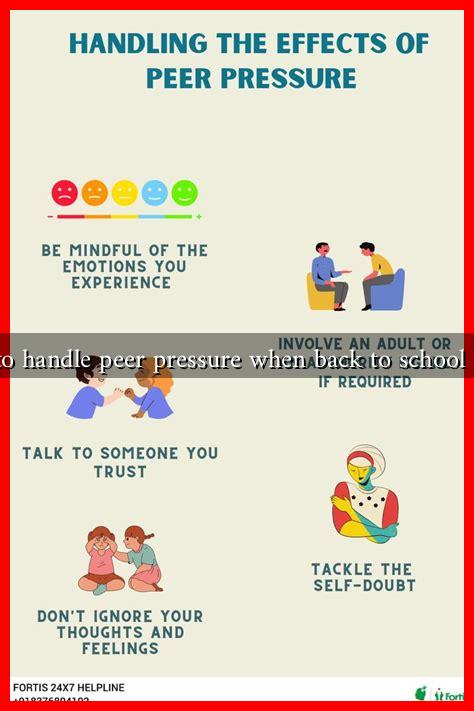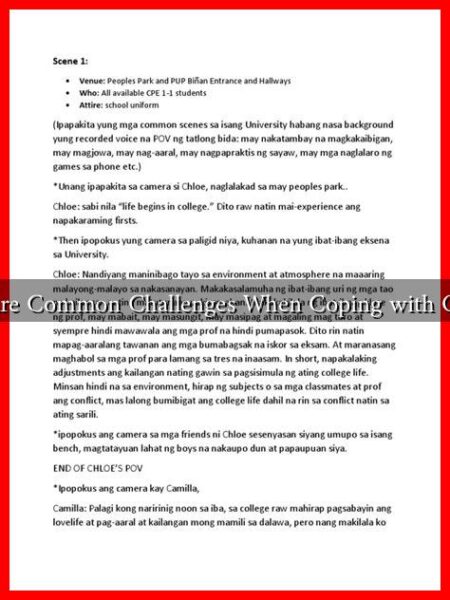-
Table of Contents
- How to Handle Peer Pressure When Back to School Starts
- Understanding Peer Pressure
- Recognizing the Signs of Peer Pressure
- Strategies to Combat Peer Pressure
- 1. Build a Supportive Network
- 2. Develop Assertiveness Skills
- 3. Set Personal Goals
- 4. Seek Guidance from Trusted Adults
- 5.
. Practice Mindfulness and Self-Reflection
- Case Studies: Real-Life Examples
- Statistics on Peer Pressure
- Conclusion
How to Handle Peer Pressure When Back to School Starts
As summer fades and the school year begins, students often find themselves facing a familiar challenge: peer pressure. This social influence can manifest in various ways, from academic performance to lifestyle choices. Understanding how to navigate these pressures is crucial for maintaining mental health and making informed decisions. In this article, we will explore effective strategies to handle peer pressure as students return to school.
Understanding Peer Pressure
Peer pressure is the influence exerted by a peer group, encouraging individuals to change their attitudes, values, or behaviors to fit in. It can be both positive and negative. For instance, friends might encourage each other to study harder or participate in extracurricular activities. However, negative peer pressure can lead to risky behaviors, such as substance abuse or academic dishonesty.
Recognizing the Signs of Peer Pressure
Before you can effectively handle peer pressure, it’s essential to recognize its signs. Here are some common indicators:
- Feeling anxious or uncomfortable in social situations.
- Changing your opinions or behaviors to align with your friends.
- Experiencing guilt or regret after social interactions.
- Feeling the need to impress others at the expense of your values.
Strategies to Combat Peer Pressure
Once you recognize peer pressure, you can employ several strategies to manage it effectively:
1. Build a Supportive Network
Surrounding yourself with positive influences can significantly reduce the impact of peer pressure. Seek friends who share your values and encourage you to make healthy choices. Research shows that students with supportive peer groups are less likely to engage in risky behaviors (National Institute on Drug Abuse).
2. Develop Assertiveness Skills
Learning to say “no” is a vital skill in resisting peer pressure. Practice assertive communication by:
- Using “I” statements (e.g., “I don’t feel comfortable with that”).
- Maintaining eye contact and a confident posture.
- Offering alternative suggestions (e.g., “How about we study instead?”).
3. Set Personal Goals
Establishing clear personal goals can help you stay focused and less susceptible to peer pressure. Whether academic, athletic, or personal, having goals provides a sense of direction. For example, if your goal is to maintain a high GPA, you may be less likely to skip classes or engage in distractions.
4. Seek Guidance from Trusted Adults
Don’t hesitate to reach out to teachers, counselors, or family members when facing peer pressure. They can offer valuable advice and support. According to a study by the American Psychological Association, students who communicate openly with adults are better equipped to handle peer pressure.
5. Practice Mindfulness and Self-Reflection
Mindfulness techniques, such as meditation and journaling, can help you become more aware of your thoughts and feelings. This self-awareness allows you to recognize when you are being influenced by peers and to make conscious choices that align with your values.
Case Studies: Real-Life Examples
Consider the story of Sarah, a high school junior who felt pressured to attend parties where alcohol was present. By confiding in her school counselor and setting clear boundaries with her friends, she was able to navigate these situations without compromising her values. Sarah’s experience highlights the importance of support systems and assertiveness in overcoming peer pressure.
Statistics on Peer Pressure
Understanding the prevalence of peer pressure can also provide context for its impact:
- According to the National Institute on Drug Abuse, 70% of teens report feeling pressured to try drugs or alcohol.
- A survey by the American Psychological Association found that 60% of students have experienced academic pressure from peers.
Conclusion
As students head back to school, the challenge of peer pressure is ever-present. By recognizing the signs, building a supportive network, developing assertiveness skills, setting personal goals, and seeking guidance, students can effectively navigate these pressures. Remember, it’s essential to stay true to yourself and make choices that align with your values. With the right strategies in place, you can thrive academically and socially while resisting negative influences.
For more resources on handling peer pressure, consider visiting Verywell Mind.





